
Recap online X-omics festival 2020
The second edition of the X-omics festival took place online, on September 28th 2020. This event contained a keynote lecture, lectures from investigators and technology pitches. We thank all the speakers, the sponsors and the participants and look forward to future events.
You can find the recordings of this event on our YouTube channel. More details about the speakers and a summary of their presentations with highlights/key take home messages can be found below.
Aftermovie 2020
X-omics festival summary
 Tim Hubbard (King’s College London, UK);
Tim Hubbard (King’s College London, UK);“The 100,000 genomes project”
Summary
The keynote speaker Tim Hubbard (King’s College London & Genomics England) introduced the UK's 100,000 genomes project which set out to mainstream whole genome sequencing for treatment into the UK National Health Service (NHS). Genomics England, set up in 2013 to deliver the project, established sequencing and interpretation pipelines to enable whole genome sequences (WGS) to be analyzed for rare diseases and cancer patients with individual reports returned to clinicians. Following the successful completion of the project, the UK is establishing the NHS Genome Medicine Service which will sequence another 500,000 whole genomes for clinical care over the next 5 years, alongside a commitment to sequence the whole of the research cohort UK Biobank (another 500,000 whole genomes). Tim talked about how data from the project had been made accessible to more than 3,000 researchers through the creation of a ’Trusted Research Environment’ and how this model is being more widely adopted to enable research access to health service data in UK.
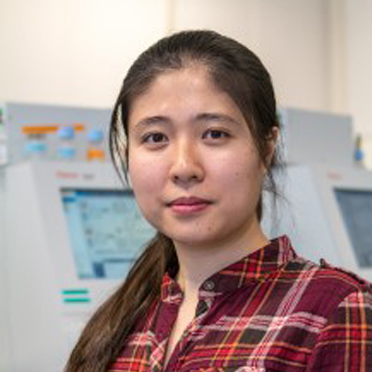 Wei Wu (Utrecht University);
Wei Wu (Utrecht University);“A multi-omics human enteroendocrine cell atlas reveals novel secreted hormones and inter-enteroendocrine communication”
Key take home messages
- Analysis of gut hormone secretion and extracellular peptide hormone processing requires a proteomics approach.
- Combined analysis of human enteroendocrine cells (EECs) by transcriptomics, proteomics, secretomics and bioactive peptidomics provides a high resolution mRNA and secretome atlas resource.
 Tony Zucca (NanoString);
Tony Zucca (NanoString);“Morphology driven high plex RNA and protein spatial analysis of FF & FFPE tissue microenvironments”
Summary
Whether you are a discovery or translational researcher, the GeoMx DSP is the most flexible spatial solution designed to conform to your ever-changing research needs. It allows you to explore biology with more targets (>20,000) and more analytes (RNA & Protein) to get to your publishable discovery data faster. Plus, expand your research scope and/or collaborations to access more sample types. From FFPE and Fresh Frozen to the most challenging sample types, your research is not limited by type of sample leading to broader discovery and faster data.
 Bert Wouters (Leiden University);
Bert Wouters (Leiden University);“Novel analytical technologies for metabolomics: more for less”
Summary
Bert Wouters (Leiden University) talked about “Novel analytical technologies for metabolomics: more for less". More specifically, he discussed a novel sample-handling platform for high-throughput flow-NMR aiming to triple the sample throughput compared to conventional NMR screening platforms. He shared insights into the design process of the new platform, including the use of segmented-slug flow for sample transfer, the development of a non-intrusive laser sensor to characterize sample transfer, the development of a novel fluoropolymer-based NMR flow cell, and finally, the application of the NMR platform for high-throughput screening of wine samples.
Key take home messages
- Nuclear magnetic resonance (NMR) spectroscopy has proven itself as a powerful analytical technique capable of providing quantitative molecular information of complex samples in a cost- and time-efficient manner. For rapid screening of samples, fast and robust sample transfer is crucial to increase the sample throughput.
- Segmented-flow analysis NMR (SFA-NMR) with fluorinated oil was recently introduced for sample transfer, employing a biphasic flow consisting of samples isolated by oil segments. It has numerous benefits over existing flow-NMR methods (direct-injection, DI-NMR, flow-injection analysis, FIA-NMR, and segmented-flow analysis with air bubbles to separate samples), most importantly lower sample consumption, zero sample dispersion, and low carryover.
- A laser-based sensor for the characterization and differentiation of segmented flow through optically-transparent fluoropolymer tubing was developed. The sensor was successfully applied for the detection of liquid-liquid and air-liquid flows and was able to identify ten common solvents in segmented flow. The high temporal resolution allowed to assess the slug quality and identify break-up mechanisms such as frothing and fragmentation.
- We have developed a novel polychlorotrifluoroethylene (PCTFE) fluoropolymer flow cell combined with segmented-flow analysis for an automated flow-NMR screening platform based on a conventional 5.0-mm NMR probe.
- Compared to the material properties of conventional glass flow cells, the proposed PCTFE flow cells are less fragile, cheaper in terms of manufacturing costs, and offer improved wetting by the fluorinated oil for SFA-NMR as their surface is permanently fluorinated.
- We demonstrated a very low sample-to-sample carryover for sucrose, maleic acid, and citrate samples as well as multi-component samples such as wine (0.4-1.1% range).
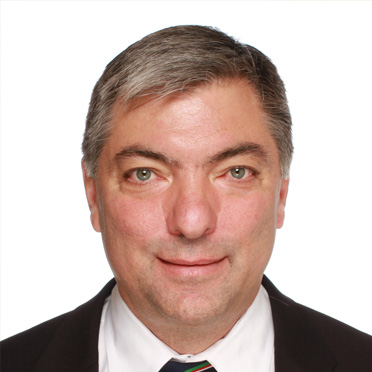 Gary Kruppa (Bruker);
Gary Kruppa (Bruker);“SpatialOMx: How spatio-temporal x-omics can improve our understanding of tumor microenvironments”
Summary
Bruker’s innovative timsTOF Flex mass spectrometer includes the ability to do MALDI-MS imaging on tissue slices as well as protein and metabolite identification and quantitation on proteins and metabolites extracted from the same tissue slice. In all modes of analysis the timsTOF Pro provides accurate measurements of the collision cross sections of the measured metabolites and proteins, providing an additional dimension of information to correlate spatially resolved information from imaging with detailed identification and quantitation results from LC-MS workflows in an approach we call 4D-SpatialOmx.
Key take home messages
- Disease tissue such as cancer is not homogeneous, but includes cancerous, pre-cancerous and healthy regions
- MALDI-MS imaging allows non-targeted discovery of metabolites and protein markers that distinguish these tissue types
- LC-MS workflows allow in-depth quantitation and identification of those markers in a 4D-SpatialOmx
Due to the use of privacy sensitive information, Gary's online presentation can’t be shown.
Presentation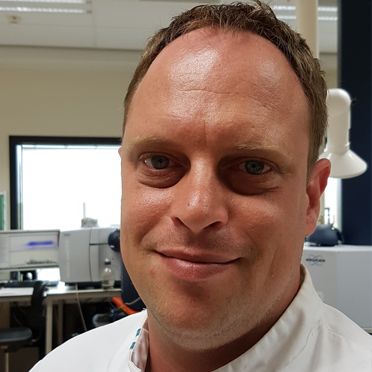 Hans Wessels (Radboudumc);
Hans Wessels (Radboudumc);“Clinical glycoproteomics in diagnostics and research”
Summary
During the X-Omics 2020 festival dr. Hans Wessels presented on application of clinical glycoproteomics in research and diagnostics. He shared insights into the technology driving N-glycopeptide profiling in plasma and how acquired site-specific protein glycosylation data is key to understand and detect disease processes. First examples for implementation of glycopeptide-based diagnostics at the Translational Metabolic Laboratory of the Radboudumc were shown to illustrate the translation from research technology into applied patient care.
Key take home messages
- Plasma glycoproteomics is analytically robust technology
- Differential glycoforms are clinically relevant and help to understand glycobiology in disease
- Glycopeptide analysis has high potential to advance diagnostics for genetic and acquired human diseases
- Baseline glycosylation of proteins in healthy conditions determines if the protein can be used to monitor specific glycosylation changes for clinical applications
- Glycosylation changes can occur in a protein-, tissue- and site-specific manner
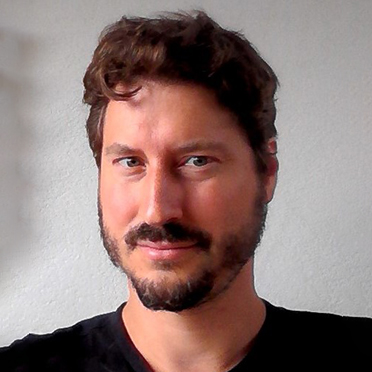 Ruben Pool (Microsoft);
Ruben Pool (Microsoft);“From data ingestion to collaborative data science”
Summary
Many of the technical challenges that the fields of genomics, proteomics and metabolomics evoke can be addressed by using cloud technology. On demand scalable storage and compute enable cost efficient data handling and analysis. The ability to try new tools in a self-service model helps in staying agile and up to speed with the latest developments in your field.
The challenges mentioned above are even more pronounced in the field of X-omics, where workloads from a heterogeneous field of research domains need to be combined into a manageable data platform. The compute and analytics demands that arise from this combination are heavy and unpredictable.
Microsoft Azure delivers the platform tools to develop and manage a X-omics environment to tackle these problems. From automated data ingestion, data lake, MPP, and catalog options, to specialized sequencing services and an open data science platform, Azure offers tools to enable the X-omics pipeline from data ingestion to model deployment. Since Microsoft Azure has a large third party and open source ecosystem, you can use many of the tools you are used to within the context of this platform
Key take home message
- Consider if cloud technology would address your challenges. Experiment and play around with Microsoft Azure. Contact us if you could use some help.
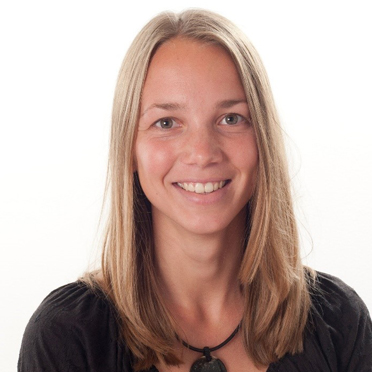 Jenny van Dongen (VU);
Jenny van Dongen (VU);“DNA methylation signatures of educational attainment: an epigenome-wide association study in four Dutch cohorts”
Summary
Jenny van Dongen presented an Epigenome-wide Association Study meta-analysis of educational attainment performed within the BBMRI-NL Biobank-based Integrative Omics Study Consortium. The study included >4,000 participants from four Dutch cohorts, and focused on genome-wide DNA methylation (Illumina 450k array) measured in whole bood samples. In addition, transcriptomic (RNA-seq), genomic, and metabolomic data are available within these cohorts. Educational attainment is a key behavioural measure in studies of cognitive and physical health, and socioeconomic status. The study identified 58 CpGs associated with educational attainment at loci characterized by pleiotropic functions shared with neuronal, immune and developmental processes. Associations overlapped with those for smoking behaviour, but remained after accounting for smoking at many CpGs: Effect sizes were on average 28% smaller and genome-wide significant at 11 CpGs after adjusting for smoking and were 62% smaller in never smokers. Sources and biological implications of education-related methylation differences were examined, including correlations with maternal prenatal folate, smoking and air pollution signatures, and associations with gene expression in cis, dynamic methylation in foetal brain, and correlations between blood and brain.
Key take home messages:
- Education is closely related to health, Alzheimer’s disease, societal inequality
- Cognition = brain / DNA methylation = blood
- Methylome can provide a read-out of environmental and lifestyle differences
Links
- Results of the study are available here: http://bbmri.researchlumc.nl/atlas/
- Pipeline for DNA methylation array analysis and QC: https://molepi.github.io/DNAmArray_workflow/index.html
- Information on (how to access) BIOS Consortium data: https://www.bbmri.nl/acquisition-use-analyze/bios
- Available omics data within BBMRI-NL: https://omics-explorer.bbmri.nl
- Manuscript: van Dongen, Jenny, et al. "DNA methylation signatures of educational attainment." npj Science of Learning 3.1 (2018): 1-14.
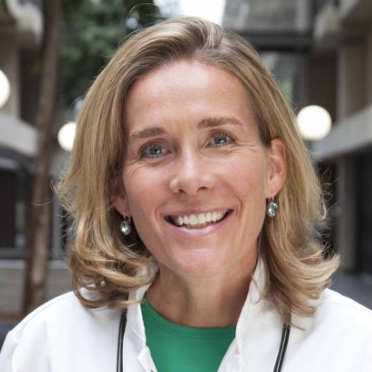 Clara van Karnebeek (Radboudumc);
Clara van Karnebeek (Radboudumc);“Inherited metabolic diseases: translating big data in better outcomes”
Due to the use of privacy sensitive information, Clara's presentation can’t be shown.
 Ahmed Mahfouz (LUMC);
Ahmed Mahfouz (LUMC);“From genetics to neurobiology through transcriptomic data analysis”
Summary
In the closing talk of the day, Ahmed Mahfouz (Leiden University Medical Center) presented the work of his group on using transcriptomic data to better understand the role of genetic variation in brain function and disease. He first presented their work on Parkinson’s disease linking findings from genetic studies to spatial expression data from the Allen Human Brain Atlas to key pathways and mechanisms that likely underly the vulnerability of brain regions to pathologies.
Next, Ahmed showed how his group is tackling the limitation in the number of genes measured simultaneously with single-cell spatial transcriptomics techniques. They recently developed SpaGE, a method which integrates spatial and single-cell RNA-sequencing data to predict genome-wide expression patterns in their spatial context.
Link 1 Link 2
Link 1: Keo, A., Mahfouz, A., Ingrassia, A.M.T. et al. Transcriptomic signatures of brain regional vulnerability to Parkinson’s disease. Commun Biol 3, 101 (2020).
Link 2: Tamim Abdelaal, Soufiane Mourragui, Ahmed Mahfouz, Marcel J T Reinders, SpaGE: Spatial Gene Enhancement using scRNA-seq, Nucleic Acids Research, gkaa740
Key take-home messages
- Spatially-mapped expression data, such as the Allen Human Brain Atlas, are instrumental in understanding neurobiological mechanisms.
- Integrating spatially-mapped expression data with patterns of pathology progression in Parkinson’s disease reveals key pathways underlying brain vulnerability.
- Understanding spatial expression patterns across brain regions is confounded by differences in cellular composition.
- While computational models can be used to infer cellular composition of bulk gene expression data, single-cell data offer new opportunities in understanding disease mechanisms at a cellular resolution.
- Valuable single-cell spatial transcriptomic data is often limited to measurements across tens or hundreds of genes.
- Integrating spatial transcriptomic data with single-cell RNA-sequencing data allows the prediction of genome-wide expression patterns in their spatial context.
- SpaGE outperforms state-of-the-art methods using is simpler, scalable and more flexible approach to predict unmeasured genes in spatial transcriptomic data at the single-cell level.
Biosketches of our festival 2020 speakers
Tim Hubbard
 Back in 1997, Tim Hubbard joined the Wellcome Trust Sanger Institute to become Head of Human Genome Analysis, where he was one of the organizers of the sequencing of the human genome. Two years later, he co-founded the Ensembl project to analyze, organize and provide access to the human genome.
Back in 1997, Tim Hubbard joined the Wellcome Trust Sanger Institute to become Head of Human Genome Analysis, where he was one of the organizers of the sequencing of the human genome. Two years later, he co-founded the Ensembl project to analyze, organize and provide access to the human genome.
From 2007 he led the GENCODE project to annotate the structure of all human genes. Tim Hubbard was the Sanger Institute PI of the Genome Reference Consortium and he became Head of the Informatics division
After the announcement of the 100,000 genomes project 2012, he was seconded part-time as a specialist advisor for genomics to NHS England leading up to the creation of Genomics England.
In October 2013 Tim Hubbard was appointed Professor of Bioinformatics and Head of the Department of Medical & Molecular Genetics at King's College London and Director of Bioinformatics for King's Health Partners with a part-time secondment as Head of Genome Analysis at Genomics England.
In 2018 he was also appointed as Associate Director (King's) for the Health Data Research London Site.
Wei Wu
 Wei Wu is an assistant professor in the Department of Pharmaceutical Sciences in Utrecht University. With a niche in extracellular (affinity) proteomics, her research focuses on dissecting intercellular crosstalk, that is mediated through secretion and/or signalling at the plasma membrane interface.
Wei Wu is an assistant professor in the Department of Pharmaceutical Sciences in Utrecht University. With a niche in extracellular (affinity) proteomics, her research focuses on dissecting intercellular crosstalk, that is mediated through secretion and/or signalling at the plasma membrane interface.
Tony Zucca
 Tony’s career has spanned from academic research into industry research instrumentation. His career of scientific experience has been with technologies such as Gene Expression, Gene Sequencing, Microscopy, Image Analysis and Digital Pathology.
Tony’s career has spanned from academic research into industry research instrumentation. His career of scientific experience has been with technologies such as Gene Expression, Gene Sequencing, Microscopy, Image Analysis and Digital Pathology.
Bert Wouters
 Bert Wouters has conducted his doctoral research at the Free University of Brussels (under the supervision of Prof. Eeltink and Prof. Desmet). During his research, he developed advanced strategies for one-, two-, and three-dimensional LC and novel approaches to prototype microfluidic devices for high-pressure liquid chromatography. After his PhD, he started working as a postdoctoral researcher at the University of Amsterdam under the supervision of Prof. Schoenmakers, focussing on the development of a microfluidic immobilized-enzyme reactor implemented in-line in a high-throughput LC×LC workflow. Currently, he is working as a postdoctoral researcher at Leiden University in the group of Prof. Thomas Hankemeier on the topics of microfluidic sample-preparation and sample-transfer, high-throughput automated techniques, and flow-NMR spectroscopy.
Bert Wouters has conducted his doctoral research at the Free University of Brussels (under the supervision of Prof. Eeltink and Prof. Desmet). During his research, he developed advanced strategies for one-, two-, and three-dimensional LC and novel approaches to prototype microfluidic devices for high-pressure liquid chromatography. After his PhD, he started working as a postdoctoral researcher at the University of Amsterdam under the supervision of Prof. Schoenmakers, focussing on the development of a microfluidic immobilized-enzyme reactor implemented in-line in a high-throughput LC×LC workflow. Currently, he is working as a postdoctoral researcher at Leiden University in the group of Prof. Thomas Hankemeier on the topics of microfluidic sample-preparation and sample-transfer, high-throughput automated techniques, and flow-NMR spectroscopy.
Gary Kruppa
 Dr. Gary Kruppa is the vice president of proteomics at Bruker Daltonics Inc. He earned his Ph.D. in chemical physics at the California institute of Technology in 1988, and subsequently has worked in the field of mass spectrometry instrumentation and applications for over 30 years. During that time he has led successful efforts to commercialize applications of mass spectrometry in metabolomics, microbiology, and proteomics, and currently leads a global team of applications scientists and developers working on new applications of mass spectrometry in the field of proteomics.
Dr. Gary Kruppa is the vice president of proteomics at Bruker Daltonics Inc. He earned his Ph.D. in chemical physics at the California institute of Technology in 1988, and subsequently has worked in the field of mass spectrometry instrumentation and applications for over 30 years. During that time he has led successful efforts to commercialize applications of mass spectrometry in metabolomics, microbiology, and proteomics, and currently leads a global team of applications scientists and developers working on new applications of mass spectrometry in the field of proteomics.
Hans Wessels
 Dr. Hans Wessels specializes in translational clinical proteomics driving further development of emerging technologies contributing to healthcare. His professional career started as proteomics specialist at the Radboud University Medical Center in 2003 working on inborn errors of metabolism and biochemistry of novel microorganisms. In this time, he was key to establish the core proteomics facility of the Radboudumc. From 2010-2015, he performed his PhD research at the Nijmegen Center for Mitochondrial Disorders where he conceived and applied novel methods to study mitochondrial complexomes. Since then, he is building his own line of research on the importance of proteoforms in disease pathology at the Translational Metabolic Laboratory. Innovative projects include the development and implementation of Top-Down proteomics and Glycoproteomics using trapped ion mobility tandem mass spectrometry for translational research and patient care.
Dr. Hans Wessels specializes in translational clinical proteomics driving further development of emerging technologies contributing to healthcare. His professional career started as proteomics specialist at the Radboud University Medical Center in 2003 working on inborn errors of metabolism and biochemistry of novel microorganisms. In this time, he was key to establish the core proteomics facility of the Radboudumc. From 2010-2015, he performed his PhD research at the Nijmegen Center for Mitochondrial Disorders where he conceived and applied novel methods to study mitochondrial complexomes. Since then, he is building his own line of research on the importance of proteoforms in disease pathology at the Translational Metabolic Laboratory. Innovative projects include the development and implementation of Top-Down proteomics and Glycoproteomics using trapped ion mobility tandem mass spectrometry for translational research and patient care.
Ruben Pool
 Ruben Pool studied Biomedical Physics at the University of Amsterdam and continued with a PhD in molecular biophysics at the AMOLF institute. After completion he worked as a data scientist in a healthcare startup and continued his career as a cloud solution architect at Microsoft. In this role for several years now, Ruben has been working with universities, research institutes and hospitals, helping them with technical challenges by designing solutions based on cloud technology.
Ruben Pool studied Biomedical Physics at the University of Amsterdam and continued with a PhD in molecular biophysics at the AMOLF institute. After completion he worked as a data scientist in a healthcare startup and continued his career as a cloud solution architect at Microsoft. In this role for several years now, Ruben has been working with universities, research institutes and hospitals, helping them with technical challenges by designing solutions based on cloud technology.
Jenny van Dongen
 Jenny van Dongen is an assistant professor at the department of Biological Psychology at the VU Amsterdam. She works with data from the Netherlands Twin Register to study the causes of individual differences in DNA methylation and the connections between epigenetic mechanisms and behavior and health. Dr. van Dongen has a Bachelor’s degree in Biology and Master’s degree in Neuroscience, and obtained her PhD at the VU Amsterdam in 2015. Within the BBMRI-NL BIOS consortium (http://www.bbmri.nl/acquisition-use-analyze/bios/), she has worked together with multiple Dutch biobanks to study the interplay between genome, epigenome, transcriptome, and complex traits, and led an epigenome-wide association study meta-analysis of educational attainment (https://www.nature.com/articles/s41539-018-0020-2).
Jenny van Dongen is an assistant professor at the department of Biological Psychology at the VU Amsterdam. She works with data from the Netherlands Twin Register to study the causes of individual differences in DNA methylation and the connections between epigenetic mechanisms and behavior and health. Dr. van Dongen has a Bachelor’s degree in Biology and Master’s degree in Neuroscience, and obtained her PhD at the VU Amsterdam in 2015. Within the BBMRI-NL BIOS consortium (http://www.bbmri.nl/acquisition-use-analyze/bios/), she has worked together with multiple Dutch biobanks to study the interplay between genome, epigenome, transcriptome, and complex traits, and led an epigenome-wide association study meta-analysis of educational attainment (https://www.nature.com/articles/s41539-018-0020-2).
Roland Kanaar
 Roland Kanaar (1961) is professor of Molecular Genetics and head of the Molecular Genetics department at the Erasmus University Medical Center. His research focuses on the molecular mechanisms and biological and physiological relevance of the DNA damage response. His work integrates interdisciplinary approaches from molecules to cancer patients. His research group uses fundamental insights into how the DNA damage response works and how it can be manipulated to enhance and design cancer treatments. In 2002 he was elected a member of the European Molecular Biology Organization (EMBO) and in 2013 he was elected to the Royal Netherlands Academy of Arts and Sciences (KNAW). In 2020 his research team won the "Ammodo Science Award for groundbreaking research" in the natural sciences.
Roland Kanaar (1961) is professor of Molecular Genetics and head of the Molecular Genetics department at the Erasmus University Medical Center. His research focuses on the molecular mechanisms and biological and physiological relevance of the DNA damage response. His work integrates interdisciplinary approaches from molecules to cancer patients. His research group uses fundamental insights into how the DNA damage response works and how it can be manipulated to enhance and design cancer treatments. In 2002 he was elected a member of the European Molecular Biology Organization (EMBO) and in 2013 he was elected to the Royal Netherlands Academy of Arts and Sciences (KNAW). In 2020 his research team won the "Ammodo Science Award for groundbreaking research" in the natural sciences.
Clara van Karnebeek
 Professor Clara van Karnebeek is head of the metabolic diseases department in the Radboud University Medical Centre in Nijmegen and principal investigator at the Amsterdam University Medical Centres, The Netherlands and the University of British Columbia in Vancouver Canada.
Professor Clara van Karnebeek is head of the metabolic diseases department in the Radboud University Medical Centre in Nijmegen and principal investigator at the Amsterdam University Medical Centres, The Netherlands and the University of British Columbia in Vancouver Canada.
Clara’s work as a pediatrician and biochemical geneticist focuses on early diagnosis and innovative treatment of neurometabolic diseases in a P4-medicine model. Her international team integrates genomic and metabolomics technologies to unravel the cause of degenerative brain conditions in children, discovering novel genetic conditions and treatment targets. She implements this knowledge in the management of her patients, via clinical trials with personalized outcomes. Translating new knowledge into expanded newborn screening, as well as useful information and action for the patient and family, using digital applications, are the ultimate goals of her multi-disciplinary team’s effort.
She is the Director of United for Metabolic Diseases (www.umd.nl), a Dutch consortium uniting all 6 academic metabolic expertise centers and the patient organizations to optimize research and care.
She published over 170 peer-reviewed journal articles, multiple clinical guidelines and chapters in textbooks. Clara is regularly invited for keynote lectures at international conferences for professional societies in neurology, genetics and pediatrics. She is a dedicated teacher and mentor for clinical and research trainees at different stages. For her contributions to research and clinical care and commitment to translational science she received the Canadian Organization for Rare Diseases Scientist Award.
Ahmed Mahfouz
 Ahmed Mahfouz is an assistant professor at the Human Genetics Department at the Leiden University Medical Center. His research combines machine learning and statistical models to analyze single cell data. He aims to use these approaches to study the effects of genetic variation on cellular diversity.
Ahmed Mahfouz is an assistant professor at the Human Genetics Department at the Leiden University Medical Center. His research combines machine learning and statistical models to analyze single cell data. He aims to use these approaches to study the effects of genetic variation on cellular diversity.



